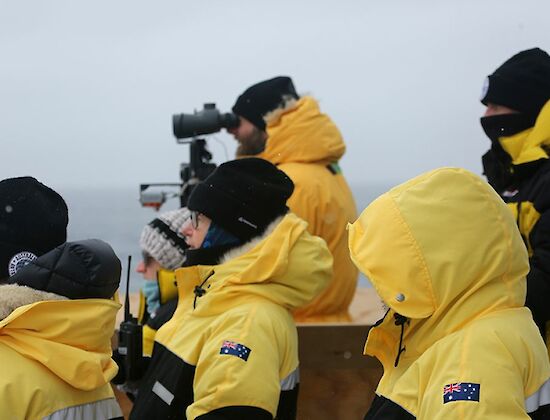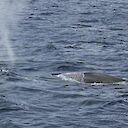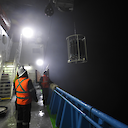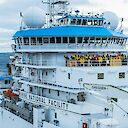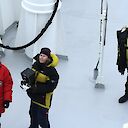Successful voyage returns from Southern Ocean
Australian Antarctic Program scientists have used innovative technologies, including drones, to shed new light on the distribution of endangered Antarctic blue whales and their food source krill.
The CSIRO research vessel RV Investigator returned to Hobart today after a seven week voyage to the Southern Ocean, covering 200,000 square kilometres.
Voyage Chief Scientist Dr Mike Double said the researchers were looking at the complex relationship between Antarctic blue whales and krill, and their roles in maintaining the health of the Southern Ocean.
“This was an ambitious undertaking in an often hostile environment, and our achievements have exceeded all expectations,” Dr Double said.
The first challenge for the 28 scientists on the 13,000 kilometre journey was to find the rare Antarctic blue whales in the vast Southern Ocean.
Lead whale acoustician, Dr Brian Miller, said more than 250 underwater listening devices were deployed during the voyage to detect the low frequency calls of the whales.
“We monitored over 750 hours of underwater recordings and measured over 33,000 bearings to blue whale calls, which enabled us to home in on whale ‘hotspots’,” Dr Miller said.
Over 300 hours of search effort led to 36 encounters with blue whales and individually identifying 25. One was a whale which had previously been sighted on an expedition six years ago.
Krill ecologist with the Australian Antarctic Division, Dr So Kawaguchi, said this is the first time a survey of blue whales has been conducted together with a structured survey of their prey.
“This opens a window into understanding the relationship between the world’s largest animal and one of the world’s most abundant organisms, Antarctic krill,” Dr Kawaguchi said.
For the first time on an Australian research vessel, echo sounders were used to construct three-dimensional pictures of giant krill swarms. Several swarms extended over one kilometre in length and hundreds of metres across, containing many millions of krill.
“We’ve now got so much more information about the fine-scale three-dimensional structure of krill swarms that we can start to get a better idea of the sort of swarms Antarctic blue whales hunt,” he said.
Drones were used in more than 130 missions across a range of scientific applications, including the first size measurements and ‘blow’ sampling of blue whales in the Southern Ocean and a new method for trace metal surface water sampling.
Voyage Deputy Chief Scientist Dr Elanor Bell said biogeochemists conducted experiments on the water samples, to test the theory that whale faeces is an important source of iron in the Southern Ocean.
“It’s thought the whales’ iron-rich faeces may stimulate the growth of phytoplankton on which krill feed, which in turn becomes whale food,” Dr Bell said.
“We looked at the entire food chain from the smallest organisms on the planet to the largest – viruses to bacteria to phytoplankton to krill to Antarctic blue whales.”
The voyage’s multidisciplinary research will contribute to the improvement of ecosystem-based management of the Antarctic krill fishery and the conservation of endangered species such as Antarctic blue whales.
This research was supported by a grant of sea time on RV Investigator from the CSIRO Marine National Facility.


